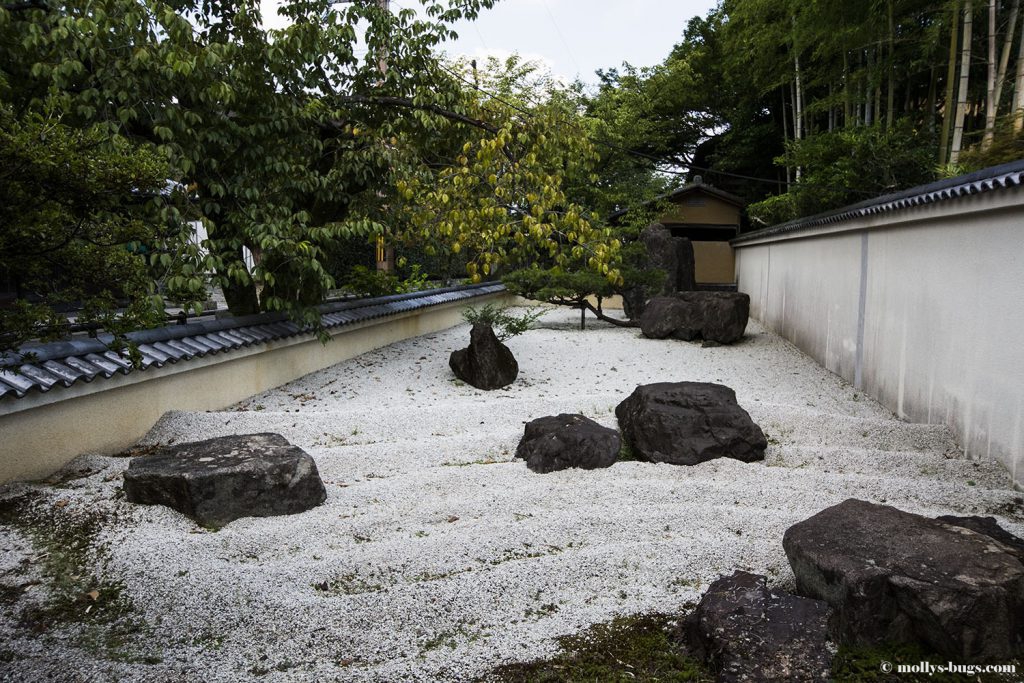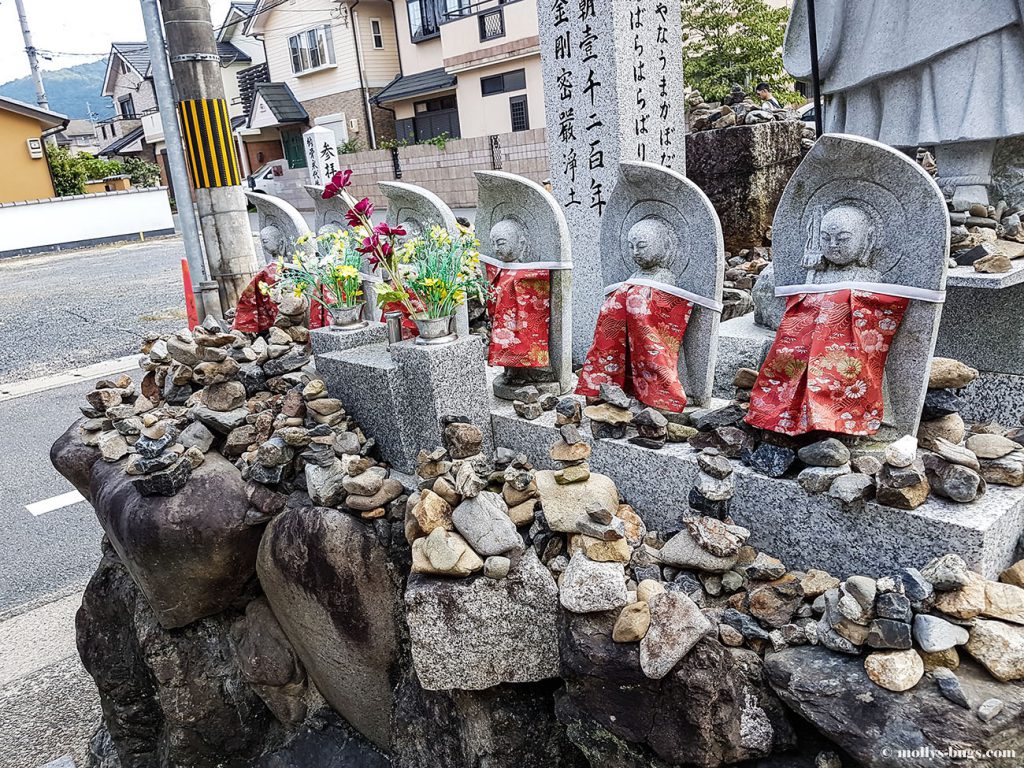If you’re tired of Japan’s grand megalopolises, you should seek some solitude in their small satellite towns. Life is entirely different there: they are filled with an air of calmness and peacefulness, and the nature around them is pleasant for the eyes and makes you feel at ease. One such soothing place is Arashiyama, which lies on the outskirts of Kyoto.
- How to Get There
- How to Get Around When You’re There
- Iwatayama Monkey Park
- Sagano Bamboo Forest
- Get Lost Among the Cozy Streets
How to Get There
On a train: via the JR Sagano Line from Kyoto directly to the Saga-Arashiyama Station. Mind that you won’t be riding a high-speed Shinkansen, but a regular electric train. It takes no longer than 15 minutes. A walk from the station to the centre of Arashiyama takes around 10 minutes.
On a bus: there are several bus lines from Kyoto, but it’s better to take the train due to frequent traffic jams.
How to Get Around When You’re There
On a bicycle: Arashiyama is the best place to rent a bike. It costs 1000 yen for a whole day. The only condition is to return the bike by 5 pm because the rental shop only works until that hour. You can park the cycle anywhere as long as there are no prohibiting signs. Also, even though the crime rate in the area is pretty low, it’s best to lock the bicycle to prevent theft.
Walking: you can take a casual stroll through the parks and gardens, but you won’t get very far by foot, so it’s recommended to rent a bicycle to see as many places as possible.
Iwatayama Monkey Park
After taking a good look at the deer in Nara, we couldn’t pass on the opportunity to visit the Monkey Park and meet the macaques inhabiting it. Bicycles can be parked down at the entrance, and you’ll need to walk after that. The park itself is located at the top of a small mountain, so take plenty of water with you on a hot day: you’ll have to go up for about 30 minutes, which won’t be easy under the heat. Entry tickets are sold below, near the signs that strictly prohibit carrying any food and fruits with you. Despite their adorable looks, the monkeys can cause serious harm when provoked or angered. No interaction with the primates is allowed: under no circumstances should you try to touch them or kneel in front of them. They have an unpredictable temper and might attack. Keep in mind that you’re a guest at their home, so try to be courteous.
There are over 200 primates in the park, and they have a clear hierarchy. There are several families dominated by leaders. On the very top of the mountain, there is a small wooden house where you can rest after the strenuous ascent. Also, this building has nets instead of windows. You can feed the animals here. The food for them is sold here as well: you can choose between sliced fresh apples and shelled peanuts. Another sign informs visitors that buying the food won’t guarantee the monkeys will eat it since the flow of tourists that want to feed them is great, and the animals may not be hungry. There are additional rules posted here on how to offer the food properly: only in an open palm, and you must never try to grab the monkeys by the paws or belly because it will immediately agitate them.
The cabin is surrounded by supervisors with devices that look like mops. I think they are used to chase the monkeys from the visitors in case of conflict. We decided to go a bit higher from the building, and I was careless enough to twist an ankle on one of the steps. Due to the sudden pain, I sat down to come to my senses. Immediately, a supervisor ran up to me and asked if my issue was caused by a monkey. When I answered that everything is fine, he still insisted that I should go with him to get treated. I refused because the pain gradually subsided. The park’s employee stepped away from me after a while when he made sure that I was okay. This is how friendly and attentive the staff at this place is.
Aside from tourists, many students and scientists come here to observe the monkeys in the wild, so it’s hard to overestimate its significance for the Japanese. Going down was much easier and faster. We returned to our bicycles in 15 minutes.
Sagano Bamboo Forest
Many guides strongly recommend starting the visit to Arashiyama with the Bamboo Forest because the plant plays a big part in the Japanese culture. Bamboo sprouts have an impressive look. Bamboo is often called a tree, but it’s really a grass that grows really fast. The growth speed wholly depends on how developed the rhizome is, but, on average, some types of these evergreen sprouts can grow as fast as 50 cm per 24 hours. No other plant on the planet can grow so quickly. Its maximum length can be up to 40 metres, and the trunk can get up to 80 centimetres in circumference.
Bamboo is a sacred plant for the Japanese, considered to be a symbol of enlightenment and longevity. It also represents the strength of spirit that is inherent for the Japanese people. Interestingly enough, the plant blooms incredibly rarely – only once in 25–30 years (some specimens manage to flower only once in 100 years). The blooming is considered a bad omen among the Japanese, a sign of coming diseases and ruin. The process has a negative impact on the plant itself: it gives all of its strength to the flowers and dies, deprived of vital energy.
Sadly, this is one case where the photoshopped pictures on the Internet are far more beautiful than the original. The forest itself isn’t particularly big so you won’t get to walk around it for long. Also, we couldn’t get a decent picture due to the number of visitors – someone would always get in the frame. Since it was almost evening and we had to hurry up to return the bikes by 5 pm, we quickly went through the forest. We were much more interested in the numerous temples and statues that can be found in Arashiyama on every corner.
Get Lost Among the Cozy Streets
You can spend a lot of time walking down the streets of Arashiyama and, most importantly, feeling relaxed while doing it. There’s no need to set yourself a goal of visiting as many sights marked on a map as possible. You’ll have an opportunity to lose yourself among the many temples surrounded by huge trees. On every turn, you will find unusual statues and sculptures that represent Buddha and his incarnations. Sometimes you can even see the lesser known stone gardens near some of the shrines. At the river, you can see hooded boats that carry numerous tourists. There are plenty of cafés and restaurants where you can refresh yourself to continue your path of discovery at the oasis of peace and quiet that is Arashiyama.




































Leave a Reply